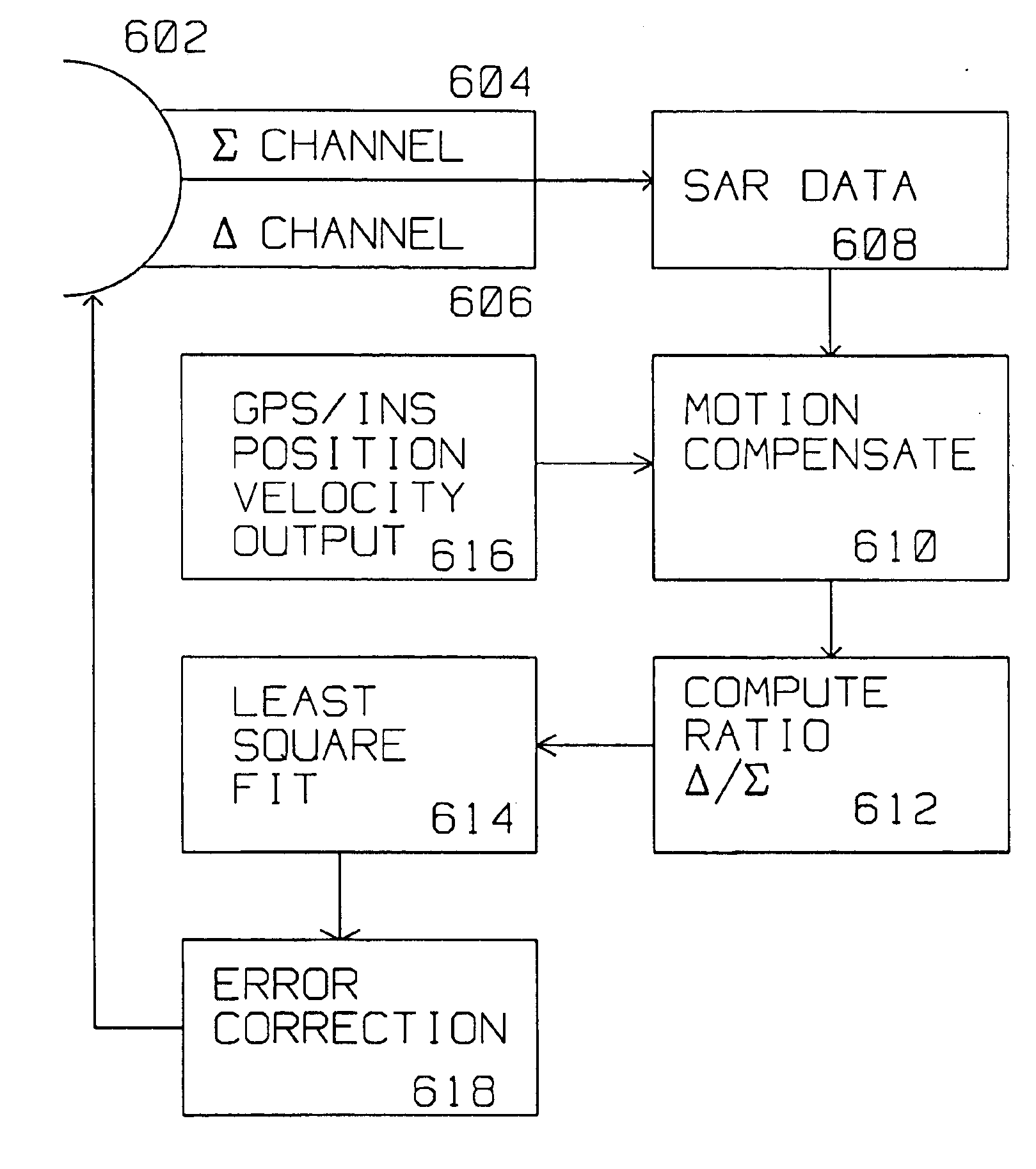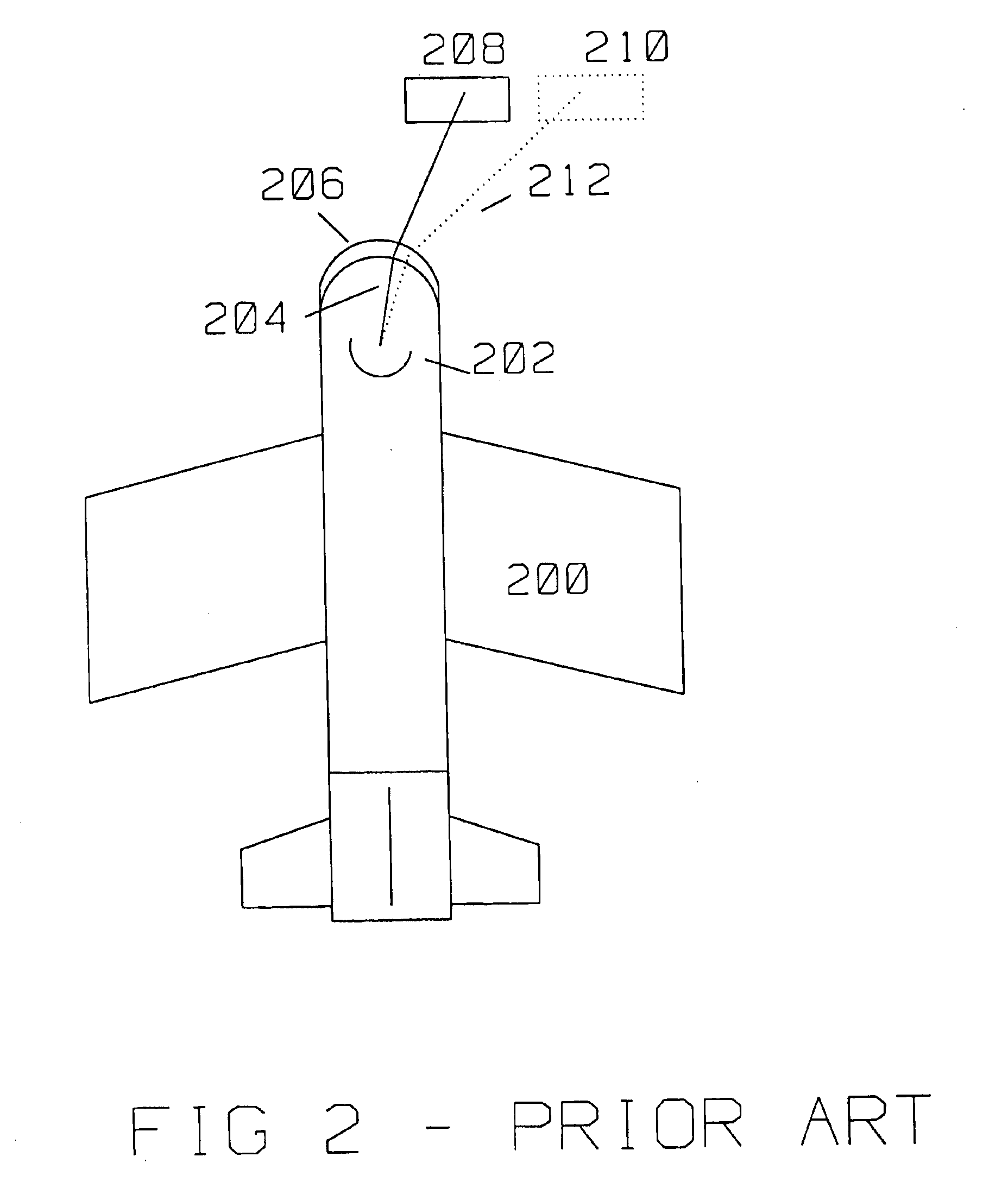Inverse precision velocity update for monopulse calibration
a technology of precision velocity and calibration, applied in the direction of instruments, measurement devices, using reradiation, etc., can solve the problems of bias errors, inability to accurately measure the angle of a monopulse to a target, and the complex process of the sar process for moving targets
- Summary
- Abstract
- Description
- Claims
- Application Information
AI Technical Summary
Problems solved by technology
Method used
Image
Examples
Embodiment Construction
The present invention describes an apparatus and method of removing bias an radome errors associated with monopulse measurements that reduces the need for a monopulse angle calibration table by using SAR imagery to estimate elevation and azimuth angle errors directly.
FIG. 1, the prior art, shows a simplified, typical geometric relationship between a moving platform carrying a radar transmitter / receiver using Synthetic Aperture (SAR) methods and target area 109 to be imaged by said radar transmitter / receiver. The moving platform is initially at position 101, travels with velocity V in the direction 107. The moving platform moves from position 101 to position 103, and then to position 105 along a path in direction 107. Imaging pulses are transmitted and received at each position 101, position 103 and position 105. At position 103 for example, the target area 109 to be imaged falls within range bins 117, 119, and 121. In azimuth, target area 109 falls within azimuth positions 111, 113 ...
PUM
 Login to View More
Login to View More Abstract
Description
Claims
Application Information
 Login to View More
Login to View More - R&D
- Intellectual Property
- Life Sciences
- Materials
- Tech Scout
- Unparalleled Data Quality
- Higher Quality Content
- 60% Fewer Hallucinations
Browse by: Latest US Patents, China's latest patents, Technical Efficacy Thesaurus, Application Domain, Technology Topic, Popular Technical Reports.
© 2025 PatSnap. All rights reserved.Legal|Privacy policy|Modern Slavery Act Transparency Statement|Sitemap|About US| Contact US: help@patsnap.com



